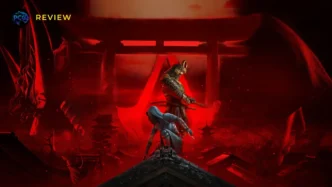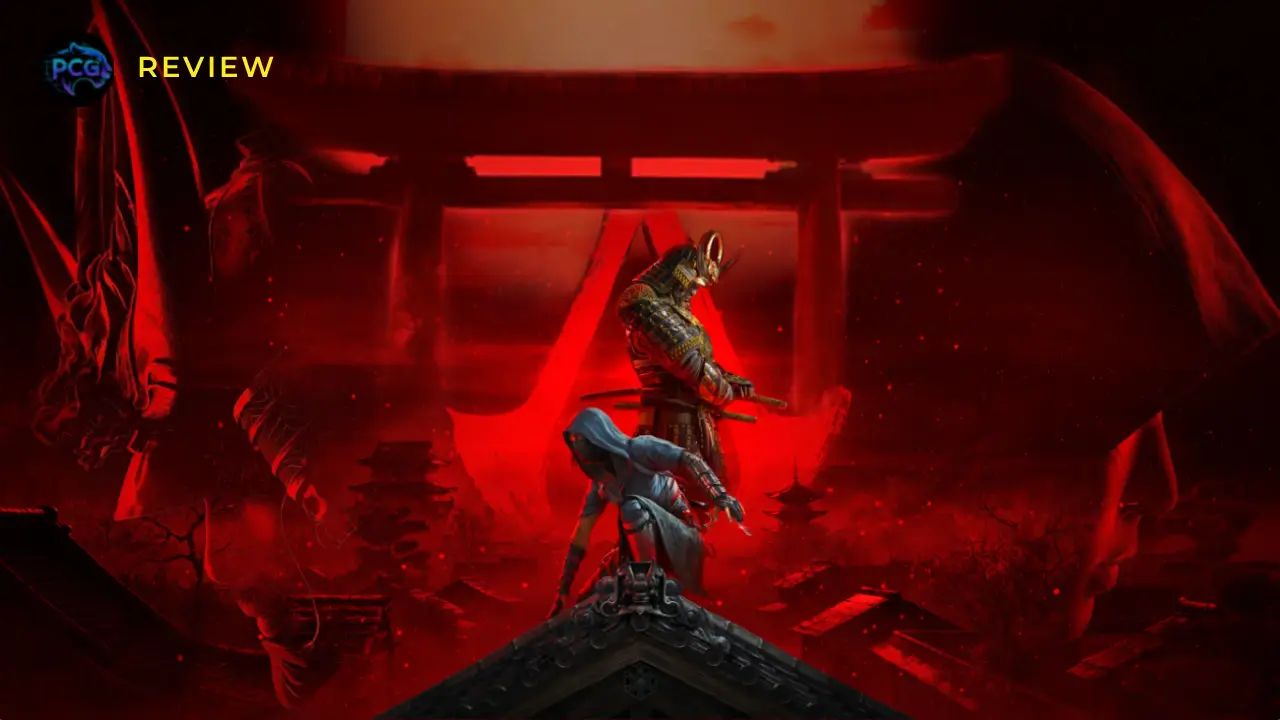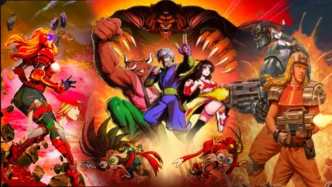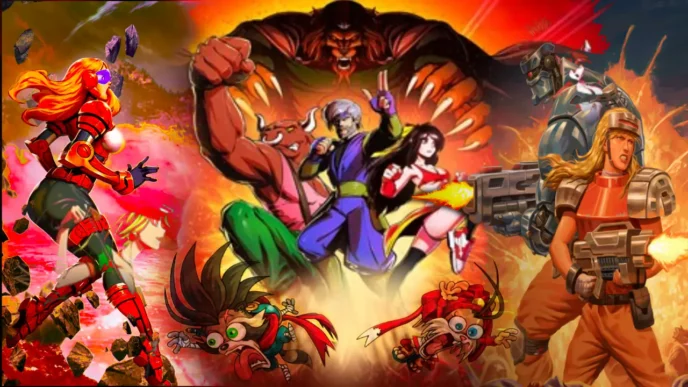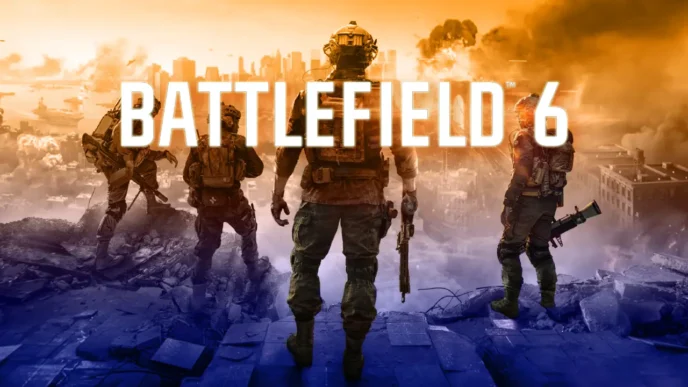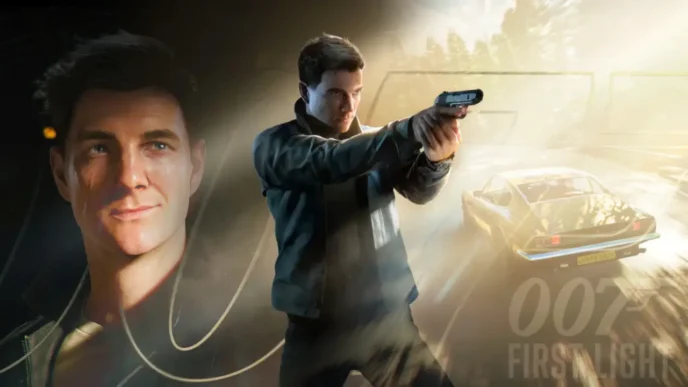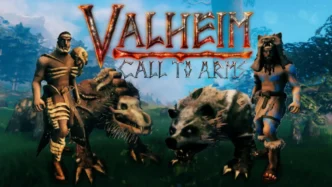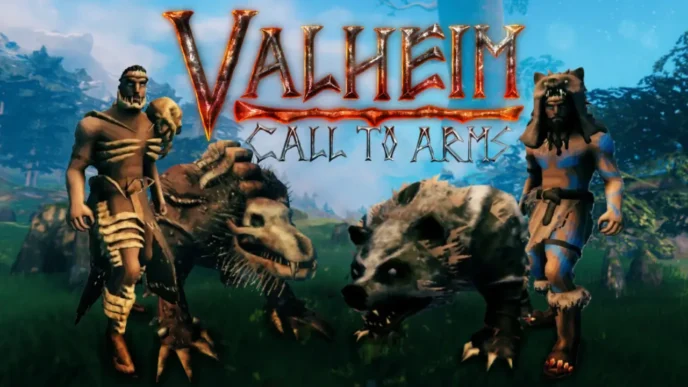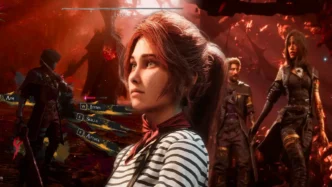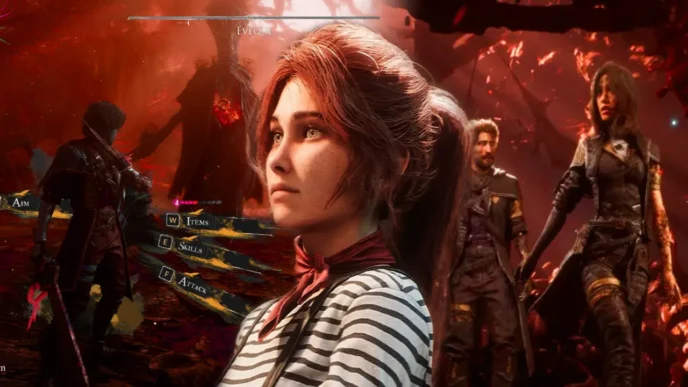After years of fan requests and speculation, Ubisoft has finally delivered the feudal Japan Assassin’s Creed Shadows experience. I’ll admit, my expectations were through the roof – and honestly, who could blame me? The prospect of wielding katanas in ancient Japan, exploring traditional temples, and living out samurai fantasies had me more excited than a kid on Christmas morning.
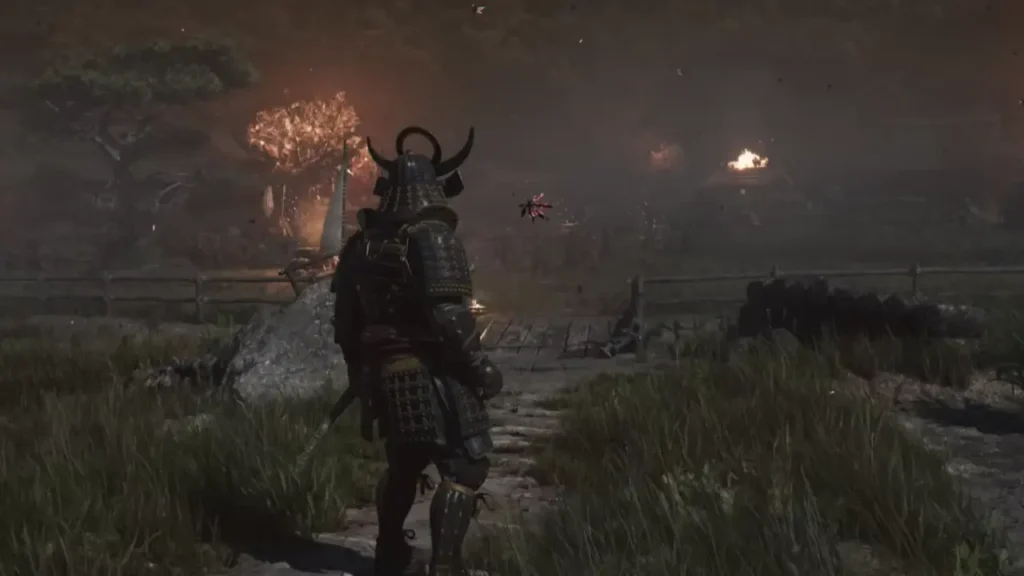
Having spent over 60 hours with Assassin’s Creed Shadows, I can confidently say that this game delivers one of the most visually stunning and mechanically satisfying experiences in the franchise’s history.
While the narrative of Assassin’s Creed Shadows doesn’t quite reach the epic heights of the setting’s potential, the dual-character gameplay and meticulous attention to historical detail create an adventure that’s hard to put down.
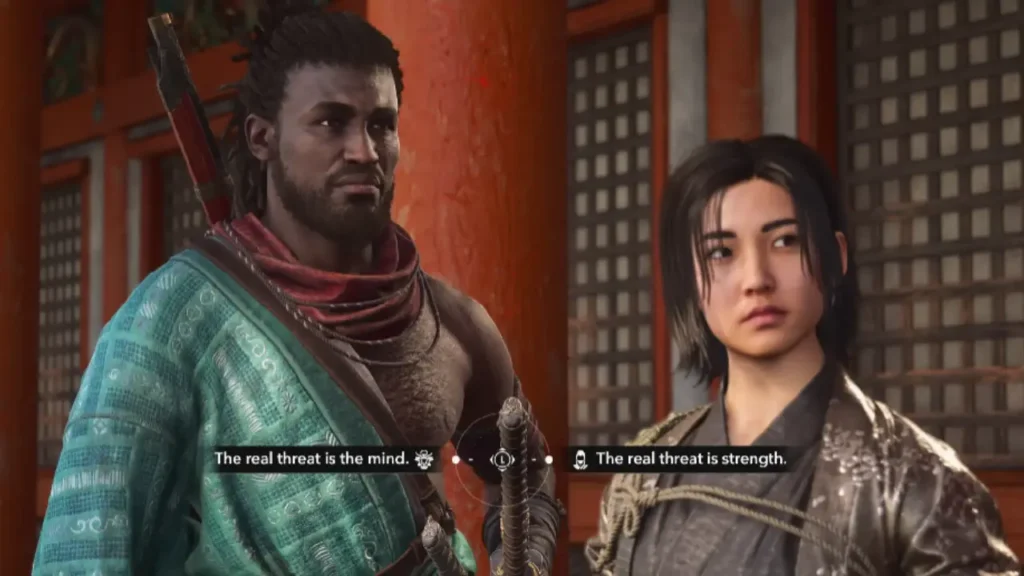
Assassin’s Creed Shadows is a game that makes you feel like you’re truly living in one of history’s most fascinating periods, even when the story occasionally feels predictable.
Table of Contents
Game Overview & Technical Specifications
| Specification | Details |
|---|---|
| Title | Assassin’s Creed Shadows |
| Genre | Action RPG, Stealth, Open World Adventure |
| Platforms | PC (Windows 10/11), PlayStation 5, Xbox Series X/S |
| Release Date | February 2025 |
| Developer | Ubisoft Quebec |
| Publisher | Ubisoft |
| ESRB Rating | M for Mature (Blood and Violence, Strong Language) |
| Storage Requirements | 85 GB (PC), 75 GB (Console) |
| Availability | Ubisoft Connect, PlayStation Store, Xbox Store, Epic Games Store |
System Requirements Breakdown
| Component | Minimum (1080p, 30fps) | Recommended (1080p, 60fps) | Ultra (4K, 60fps) |
|---|---|---|---|
| CPU | Intel i5-8400 / AMD Ryzen 5 2600 | Intel i7-10700K / AMD Ryzen 7 3700X | Intel i9-12900K / AMD Ryzen 9 5900X |
| GPU | GTX 1060 6GB / RX 580 8GB | RTX 3070 / RX 6700 XT | RTX 4080 / RX 7800 XT |
| RAM | 16 GB | 16 GB | 32 GB |
| DirectX | DirectX 12 | DirectX 12 | DirectX 12 |
Story & Characters: A Tale of Two Warriors
Exploring Feudal Japan’s Dual Protagonists
The narrative foundation of Assassin’s Creed Shadows rests on two compelling protagonists who couldn’t be more different in their approaches to conflict and life philosophy.
Yasuke: The Legendary African Samurai
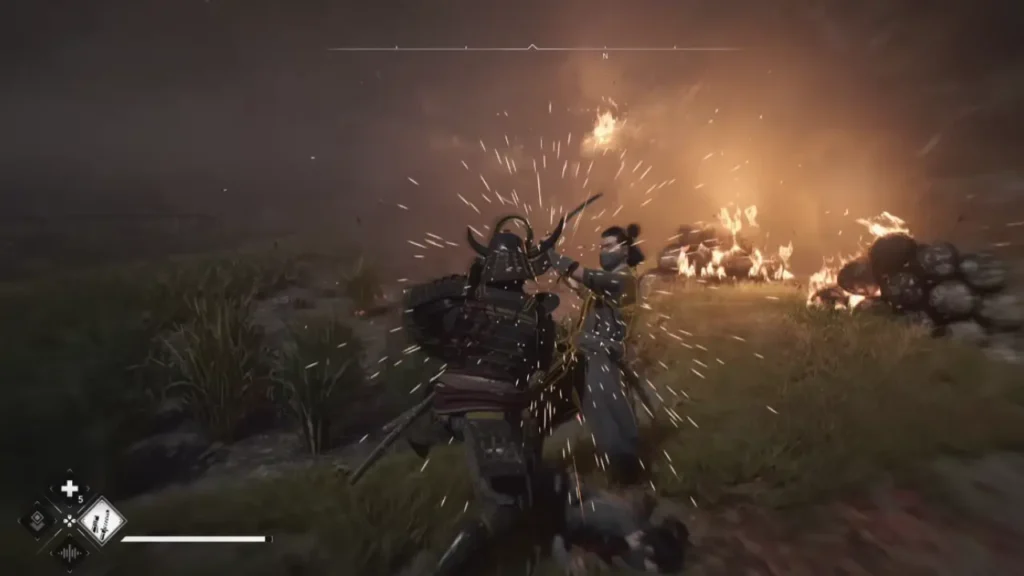
Yasuke’s story draws from real historical accounts of the African warrior who served under Oda Nobunaga. In Assassin’s Creed Shadows, he’s portrayed as a man caught between worlds – respected for his strength and loyalty, yet forever an outsider in Japanese society. His character arc explores themes of honor, belonging, and what it truly means to be a samurai.
“I have found my place not in the color of my skin, but in the strength of my convictions,” Yasuke reflects during a pivotal moment, and this quote encapsulates his entire journey.
His missions tend to focus on:
- Direct confrontation and battlefield tactics
- Protecting civilians and allied forces
- Investigating political conspiracies within the samurai class
- Building relationships with other historical figures
Naoe: The Shadow in the Night
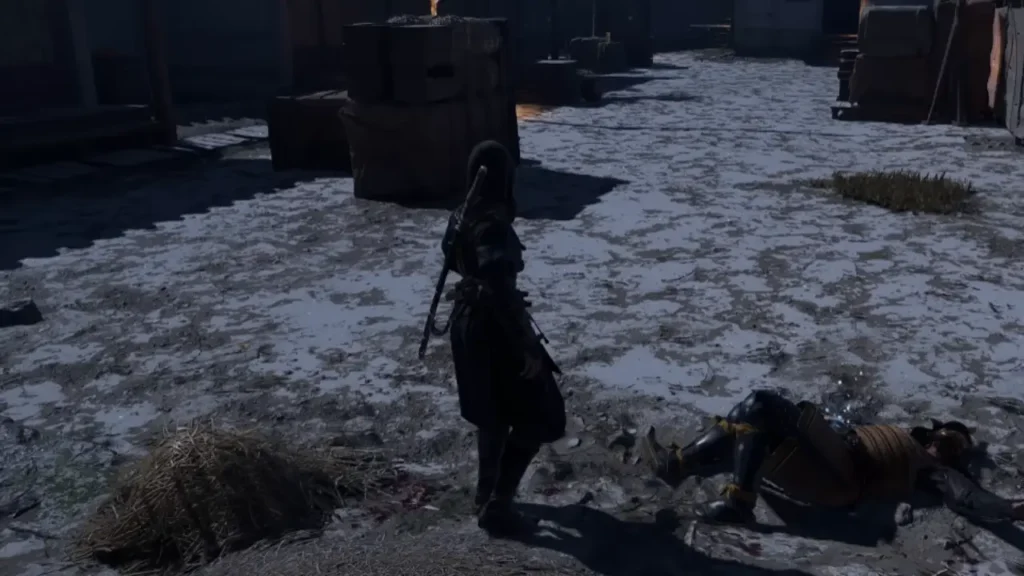
Naoe represents the traditional Assassin archetype, trained in the ancient arts of ninjutsu and stealth warfare. Her background as a shinobi from Iga Province gives her a deep understanding of Japan’s hidden conflicts and secret societies. She’s driven by personal revenge but gradually learns to see the bigger picture of the Assassin-Templar conflict.
Her storylines emphasize:
- Stealth infiltration and assassination missions
- Uncovering Templar plots within religious and merchant networks
- Personal vendetta against those who destroyed her village
- Mastering ancient Assassin techniques and philosophy
Narrative Pacing and Structure
The story unfolds at what I’d describe as a deliberately measured pace. Unlike the breakneck plotting of recent AC entries, Assassin’s Creed Shadows takes time to breathe and let you absorb the atmosphere. Some players might find this slower approach refreshing, while others accustomed to constant action might feel restless.
Story Strengths:
- Authentic historical atmosphere and cultural details
- Strong character development for both protagonists
- Excellent voice acting and motion capture
- Meaningful exploration of themes like honor, duty, and identity
Story Weaknesses:
- Predictable plot twists that veteran players will see coming
- Limited integration of classic Assassin-Templar mythology
- Some side quests feel disconnected from the main narrative
- Modern-day segments feel perfunctory rather than engaging
Key Takeaway: The narrative prioritizes atmosphere and character development over complex plotting, creating an immersive but sometimes predictable experience that newcomers will appreciate more than series veterans.
Gameplay Mechanics of Assassin’s Creed Shadows: Mastering the Art of War
Combat Systems and Dual Playstyles
The combat in Assassin’s Creed Shadows represents some of the best fighting mechanics the series has ever produced. The developers have created two distinct combat philosophies that feel completely different yet equally satisfying.
Yasuke’s Samurai Combat
Fighting as Yasuke feels like participating in a deadly dance where timing and positioning matter more than button mashing.
Core Mechanics:
- Stance System: Choose between offensive, defensive, and balanced stances
- Perfect Parry Timing: Requires precise timing but offers devastating counter-attacks
- Heavy Weapon Mastery: Katanas, naginatas, and war hammers each have unique movesets
- Intimidation Factor: Enemies react differently to Yasuke’s imposing presence
Combat Flow:
- Assess enemy formations and weapon types
- Select appropriate stance and weapon combination
- Use feints and positioning to create openings
- Execute precise strikes and combo finishers
- Manage stamina and health during extended battles
The weight and impact of each strike feels incredibly satisfying. When you land a perfect parry followed by a devastating counter-attack, the visual and audio feedback makes you feel like a legendary swordsman.
Naoe’s Stealth and Agility Combat
Naoe’s approach emphasizes speed, precision, and environmental awareness over raw power.
Stealth Mechanics:
- Shadow Navigation: Use darkness and cover to remain undetected
- Silent Takedowns: Multiple assassination animations based on approach angle
- Tool Integration: Smoke bombs, throwing knives, and grappling hooks
- Environmental Kills: Use the surroundings to eliminate targets creatively
Agility Features:
- Parkour System: Fluid movement across rooftops and natural terrain
- Wall Running: Limited vertical movement that requires strategic planning
- Stealth Kills: Chain together multiple assassinations without detection
- Escape Mechanics: Quick getaway options when stealth fails
Progression and Character Development
Knowledge Rank System
The progression system moves away from traditional leveling in favor of a “Knowledge Rank” approach that feels more thematic and meaningful.
How It Works:
- Complete missions and challenges to gain Knowledge Points
- Invest points in specific skill trees for each character
- Unlock new abilities, equipment, and combat techniques
- Specialize builds or create hybrid approaches
Yasuke’s Skill Trees
| Tree Name | Focus | Key Abilities |
|---|---|---|
| Way of the Sword | Melee Combat | Perfect Parry, Combo Extensions, Weapon Mastery |
| Bushido Code | Honor & Leadership | Intimidation, Ally Bonuses, Morale Effects |
| Tactical Warfare | Battlefield Strategy | Formation Breaking, Siege Weapons, Area Control |
Naoe’s Skill Trees
| Tree Name | Focus | Key Abilities |
|---|---|---|
| Shadow Arts | Stealth & Infiltration | Invisibility, Silent Movement, Detection Avoidance |
| Assassin Techniques | Elimination Methods | Chain Kills, Poison Mastery, Ranged Weapons |
| Shinobi Tools | Equipment & Gadgets | Tool Crafting, Environmental Usage, Escape Methods |
Key Takeaway: Combat feels challenging but rewarding, with genuine variety between protagonists that encourages multiple playthroughs to master both styles.
Mission Structure & World Design
Investigation and Intel Gathering
Most major missions follow a satisfying loop that makes you feel like a detective and warrior combined:
- Initial Briefing: Receive objectives and background information
- Intelligence Phase: Gather clues through exploration and NPCs
- Planning Stage: Choose approach based on gathered information
- Execution: Carry out the mission using preferred tactics
- Consequences: Deal with the aftermath of your choices
Open World Activities
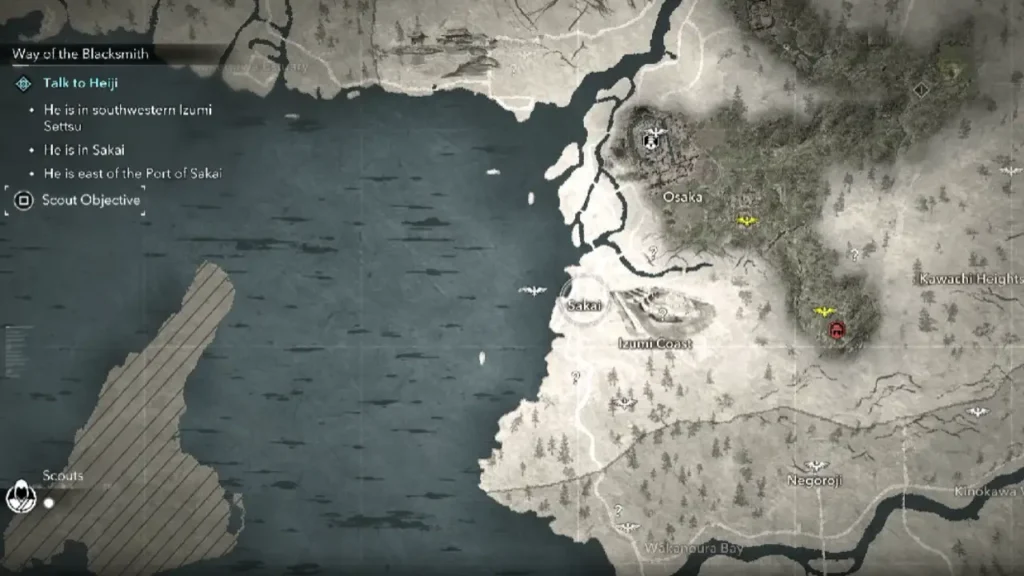
The world offers plenty to do beyond main story missions:
For Yasuke:
- Dojo Challenges: Test combat skills against master swordsmen
- Village Defense: Protect settlements from bandit raids
- Honor Duels: One-on-one combat against legendary warriors
- Historical Encounters: Meet famous figures from the period
For Naoe:
- Infiltration Contracts: Stealth-focused assassination missions
- Information Networks: Build spy networks in major cities
- Treasure Hunting: Discover hidden Assassin artifacts
- Resistance Support: Aid rebel groups fighting oppression
Map Design Philosophy
Unlike the massive open worlds of recent AC games, Assassin’s Creed Shadows opts for a more focused approach:
Regional Structure:
- Central Honshu Focus: Detailed recreation of key historical areas
- Seasonal Changes: Dynamic weather and seasonal effects impact gameplay
- Vertical Design: Multi-layered environments reward exploration
- Fast Travel Points: Strategically placed to maintain immersion
Key Takeaway: Mission design rewards player choice and creativity, while the more focused map design ensures every location feels meaningful and detailed.
Visual & Audio Experience: Bringing Feudal Japan to Life
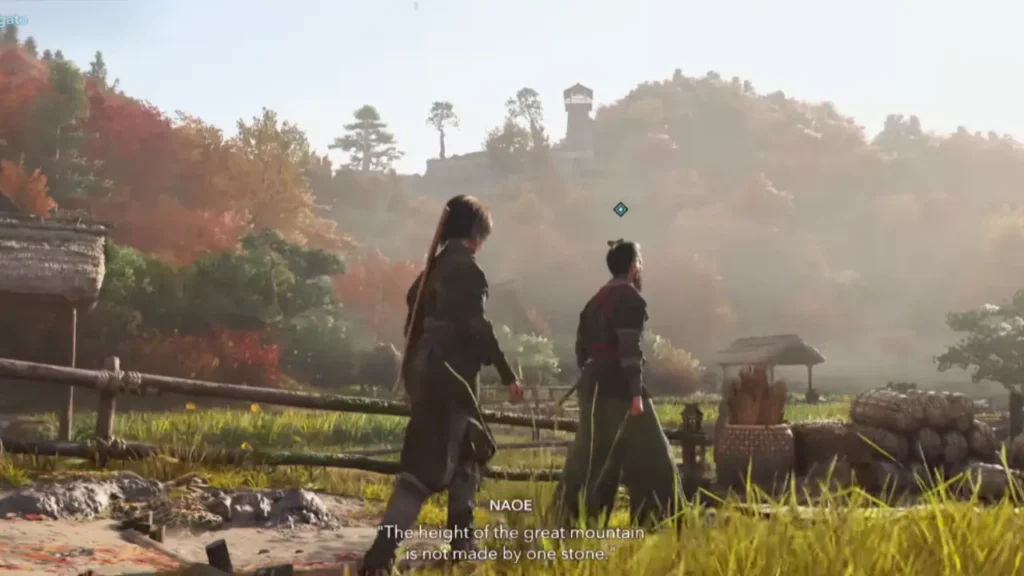
Graphics and Environmental Design
Assassin’s Creed Shadows sets a new visual benchmark for the series, creating what might be the most authentic and beautiful recreation of feudal Japan ever seen in gaming.
Dynamic Seasonal System
The game’s seasonal changes aren’t just cosmetic – they fundamentally alter how you experience the world:
Spring (Sakura Season):
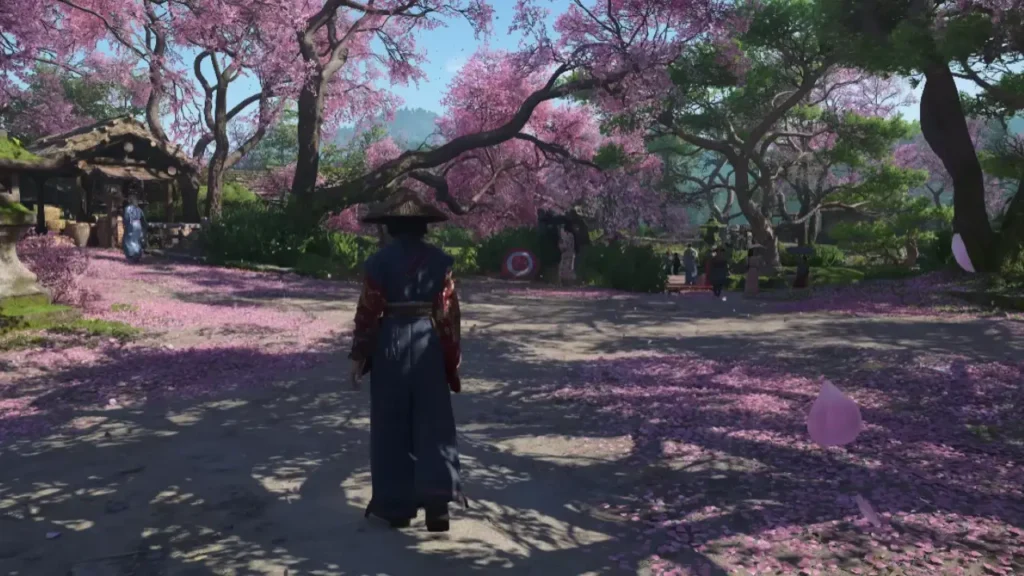
- Cherry blossoms provide natural camouflage for stealth
- Increased NPC activity during festivals and celebrations
- Optimal weather for long-distance travel and exploration
- Beautiful pink petals create cinematic moments during combat
Summer (Rainy Season):
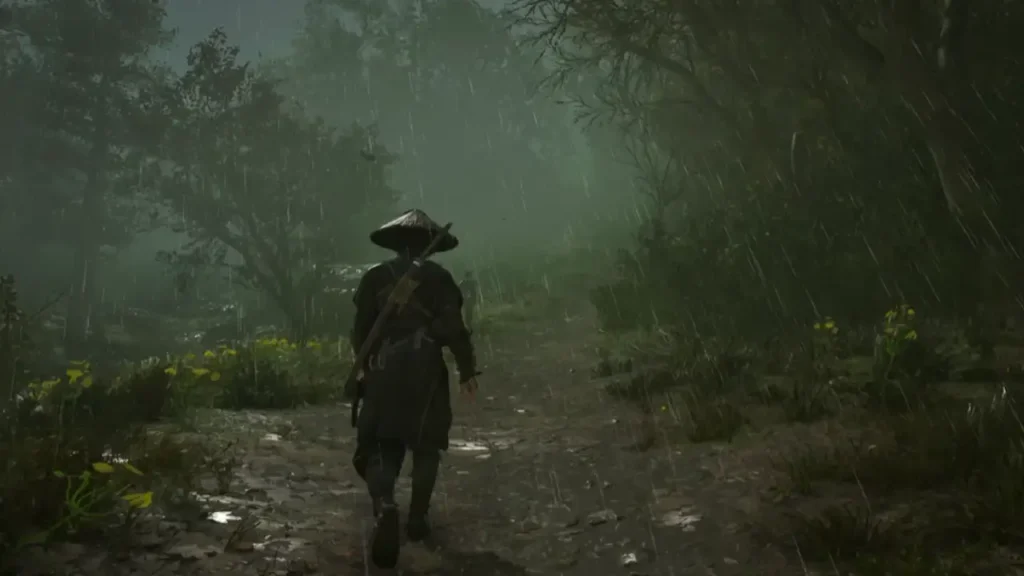
- Heavy rains reduce visibility but muffle sound
- Flooding affects certain travel routes
- Lush green environments offer more hiding spots
- Dramatic lightning illuminates night missions
Autumn (Harvest Time):
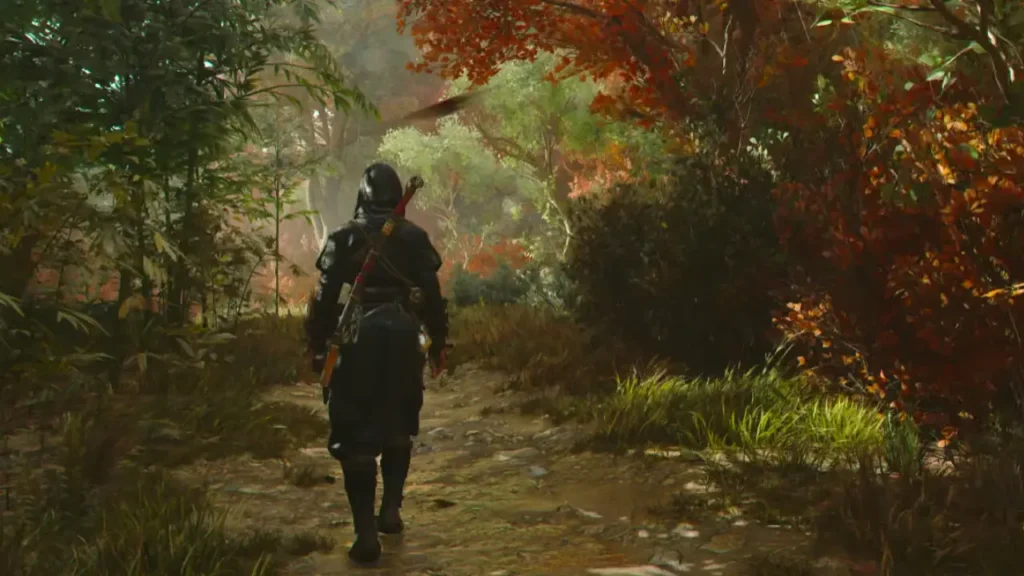
- Golden landscapes create stunning visual backdrops
- Harvest festivals provide mission opportunities
- Changing foliage alters stealth routes
- Cooler temperatures affect NPC behavior patterns
Winter (Snow Season):

- Snow tracks reveal movement patterns
- Reduced NPC activity in outdoor areas
- Stark landscapes emphasize isolation and beauty
- Ice mechanics affect climbing and traversal
Lighting and Atmosphere
The game’s lighting system deserves special recognition:
- Dynamic Time of Day: Smooth transitions that affect gameplay
- Realistic Shadows: Impact stealth mechanics and visual composition
- Weather Effects: Rain, snow, and fog create atmospheric immersion
- Interior Lighting: Authentic recreation of period-appropriate illumination
On Different Platforms:
| Platform | Resolution | Frame Rate | Special Features |
|---|---|---|---|
| PC Ultra | Up to 4K | 60+ fps | Ray tracing, DLSS 3, HDR |
| PS5 Pro | 4K upscaled | 60 fps locked | Activity cards, haptic feedback |
| Xbox Series X | 4K native | 60 fps | Quick Resume, Smart Delivery |
| Xbox Series S | 1440p | 60 fps | Optimized loading, smaller install |
Audio Design and Musical Score
Soundtrack Composition
The musical score blends traditional Japanese instruments with orchestral arrangements:
- Traditional Elements: Shakuhachi flutes, taiko drums, shamisen strings
- Orchestral Support: Full symphony backing for epic moments
- Dynamic Scoring: Music adapts to gameplay situations
- Cultural Authenticity: Consultation with Japanese musicians and historians
Environmental Audio
Sound design creates incredible immersion:
Natural Ambiance:
- Wind through bamboo forests
- Distant temple bells
- Flowing water and wildlife sounds
- Seasonal audio changes (cicadas in summer, silence in snow)
Combat Audio:
- Realistic sword clash sounds
- Impact feedback for successful hits
- Environmental destruction audio
- Enemy vocal reactions and battle cries
Stealth Audio Cues:
- Subtle indicators for enemy awareness levels
- Footstep variations on different surfaces
- Environmental masking sounds (crowds, weather)
- Audio-based detection mechanics
Key Takeaway: The visual and audio presentation creates one of the most immersive historical settings ever achieved in gaming, with every element contributing to authentic atmosphere.
Assassin’s Creed Shadows Lore Integration
Modern-Day Elements
Animus Framework
The modern-day storyline takes a backseat approach that will either disappoint or relief players depending on their preferences:
What’s Included:
- Basic Animus interface and loading sequences
- Minimal present-day character development
- Brief cutscenes explaining historical context
- Cosmetic unlocks tied to Animus progression
What’s Missing:
- Complex modern-day conspiracy plots
- Extended present-day gameplay segments
- Deep connections to previous games’ storylines
- Significant First Civilization elements
Assassin vs. Templar Conflict
The eternal struggle between Assassins and Templars remains largely in the background until the final act:
Early Game:
- Focus on personal stories and historical conflicts
- Minimal reference to hidden organizations
- Emphasis on local Japanese politics and warfare
- Character-driven motivations take precedence
Late Game:
- Gradual introduction of Assassin Brotherhood elements
- Templar influence revealed in political machinations
- Connection to broader AC universe becomes clearer
- Traditional hidden blade and eagle vision mechanics introduced
Historical Accuracy vs. Creative License
What the Game Gets Right:
- Authentic recreation of Sengoku period architecture
- Accurate portrayal of social hierarchies and customs
- Realistic weapon and armor designs
- Careful research into daily life and cultural practices
Creative Liberties Taken:
- Compressed timeline for narrative convenience
- Enhanced role of historical figures for gameplay
- Anachronistic elements for modern audience appeal
- Simplified language and cultural barriers
Key Takeaway: The minimalist approach to series lore makes this accessible to newcomers but may leave longtime fans wanting more connection to the broader AC mythology.
Community Reception & Critical Analysis
Professional Reviews Summary
Major Gaming Publications:
| Publication | Score | Key Praise | Main Criticisms |
|---|---|---|---|
| IGN | 8.5/10 | “Stunning visuals, excellent combat” | “Predictable story, weak modern elements” |
| GameSpot | 8/10 | “Dual protagonist system works perfectly” | “Limited exploration compared to recent entries” |
| PC Gamer | 82/100 | “Best AC combat in years” | “Technical issues on some hardware” |
| Game Informer | 8.75/10 | “Immersive historical setting” | “Slow narrative pacing” |
Critical Consensus:
- Combat System: Universally praised for depth and variety
- Visual Presentation: Widely acclaimed as series best
- Story Quality: Mixed reactions, with praise for characters but criticism of pacing
- Technical Performance: Generally positive with noted minor issues
Player Community Feedback
Positive Reception:
- Combat Enthusiasts: Love the challenging, skill-based fighting
- History Buffs: Appreciate authentic details and cultural respect
- Visual Enthusiasts: Amazed by graphical fidelity and art direction
- Newcomers: Find it accessible and engaging entry point
Common Criticisms:
- Series Veterans: Miss deeper lore connections and modern-day focus
- Open World Fans: Want larger, more explorable environments
- Story Critics: Find narrative predictable and slow-paced
- Technical Users: Experience performance issues on specific hardware
Community Highlights:
- Photo Mode Usage: Incredible screenshots shared across social media
- Combat Showcases: Players sharing impressive fight sequences
- Historical Discussions: Deep conversations about period accuracy
- Character Debates: Passionate discussions about protagonist preferences
Sales Performance and Industry Impact
Commercial Success:
- Strong launch sales across all platforms
- Positive pre-order numbers exceeded expectations
- DLC and season pass sales performing well
- Merchandise and collector’s editions sold out quickly
Industry Influence:
- Setting new standards for historical game authenticity
- Influencing other developers’ approach to dual-protagonist design
- Demonstrating market appetite for Japanese historical settings
- Proving that slower-paced narratives can still succeed commercially
Key Takeaway: Critical and community reception reflects a game that excels at its core mechanics and presentation while having room for improvement in narrative complexity and technical polish.
Comprehensive Pros and Cons Analysis
Major Strengths
Gameplay Excellence:
- Dual Combat Systems: Two genuinely different and equally engaging playstyles
- Skill Progression: Meaningful character development with impactful choices
- Mission Variety: Diverse objectives that reward different approaches
- Stealth Mechanics: Best stealth gameplay in recent AC entries
- Combat Depth: Challenging but fair fighting system with real mastery curve
Presentation Quality:
- Visual Fidelity: Stunning recreation of feudal Japan with incredible attention to detail
- Seasonal Dynamics: Weather and seasonal changes that impact both gameplay and atmosphere
- Audio Design: Exceptional sound design and culturally authentic musical score
- Historical Authenticity: Respectful and well-researched portrayal of Japanese culture
- Character Design: Memorable protagonists with distinct personalities and motivations
Technical Achievement:
- Performance Optimization: Smooth experience across all supported platforms
- Loading Times: Minimal interruptions to gameplay flow
- Stability: Few game-breaking bugs or technical issues
- Accessibility Options: Comprehensive settings for different player needs
- Platform Features: Good utilization of console-specific capabilities
Notable Weaknesses
Narrative Limitations:
- Predictable Plot: Story beats that veteran players will anticipate
- Pacing Issues: Slow narrative development that may test some players’ patience
- Modern-Day Integration: Minimal present-day storyline feels disconnected
- Lore Connections: Limited ties to broader Assassin’s Creed mythology
- Character Development: Some supporting characters lack depth and agency
Design Constraints:
- Map Limitations: Smaller, more linear world compared to recent AC entries
- Exploration Restrictions: Less freedom to deviate from intended paths
- Climbing Mechanics: Occasionally frustrating navigation on complex structures
- Mission Structure: Some repetitive elements in side quest design
- Difficulty Scaling: Inconsistent challenge levels across different mission types
Technical Concerns:
- Hardware Requirements: Demanding specifications for optimal experience
- Platform Disparities: Some features work better on specific platforms
- Save System: Infrequent checkpoint placement in longer sequences
- UI Design: Some interface elements feel cluttered or unintuitive
- Localization: Minor issues with subtitle timing and translation quality
Key Takeaway: Assassin’s Creed Shadows excels in its core gameplay loop and visual presentation while having room for improvement in narrative complexity and world design philosophy.
Final Verdict and Recommendations
After spending extensive time with both characters across all major story beats and side content, I can confidently say that Assassin’s Creed Shadows represents both a return to form and a bold step forward for the franchise. This is a game that knows what it wants to be and executes that vision with remarkable skill and attention to detail.
Who Should Play This Game:
Highly Recommended For:
- Combat Game Enthusiasts: The fighting system is among the best in any action game
- History Buffs: Authentic portrayal of feudal Japan with incredible cultural detail
- Visual Showcase Seekers: Stunning graphics that demonstrate current-gen capabilities
- Stealth Game Fans: Excellent stealth mechanics that reward patience and creativity
- Newcomers to AC: Accessible entry point that doesn’t require series knowledge
Recommended With Reservations For:
- Story-Focused Players: Narrative is solid but predictable and slow-paced
- Series Veterans: Limited lore connections may disappoint longtime fans
- Open World Explorers: More linear design offers less freedom than recent entries
- Budget-Conscious Gamers: Premium pricing and DLC model may be concerns
- Older Hardware Users: Technical requirements may limit accessibility
Platform Recommendations:
Best Overall Experience: PC with high-end hardware for maximum visual fidelity and performance Best Console Experience: PlayStation 5 for exclusive features and stable performance
Best Value: Xbox Series S for excellent performance-to-price ratio Most Convenient: Xbox Series X for Quick Resume and Smart Delivery features
Final Score and Summary:
Overall Rating: 8.5/10
Assassin’s Creed Shadows succeeds brilliantly at creating an immersive, visually stunning journey through feudal Japan with some of the best combat mechanics the series has ever produced. While the story doesn’t reach the epic heights of its beautiful setting, and longtime fans might miss deeper connections to series lore, there’s no denying that this is a polished, engaging adventure that showcases the best of what modern gaming can achieve.
The dual-protagonist system works exceptionally well, offering two distinct but equally compelling ways to experience the world. Whether you prefer Yasuke’s honorable samurai approach or Naoe’s shadowy assassin tactics, you’ll find gameplay that feels both challenging and rewarding.
If you’ve been waiting for Assassin’s Creed to explore feudal Japan, Assassin’s Creed Shadows delivers on that promise with style, substance, and respect for the historical period. It may not revolutionize the franchise, but it executes the established formula with enough innovation and polish to create something truly special.
For newcomers, this represents an excellent introduction to what makes Assassin’s Creed special. For series veterans, it’s a beautiful reminder of why we fell in love with these games in the first place, even if it doesn’t push the lore boundaries as much as some might hope.
Bottom Line: Assassin’s Creed Shadows is a must-play experience for anyone interested in historical action games, exceptional combat systems, or simply wants to lose themselves in one of the most beautiful and authentic game worlds ever created.
Frequently Asked Questions
Is Assassin’s Creed Shadows good for newcomers to the series?
Yes, absolutely! The minimalist approach to series lore makes this one of the most newcomer-friendly entries in the franchise without requiring extensive background knowledge.
Can you freely switch between Yasuke and Naoe during gameplay?
You can switch between characters at specific story points and during free exploration phases, with some missions designed specifically for one character’s unique abilities.
How long does it take to complete Assassin’s Creed Shadows?
The main story takes 25-30 hours, while completionist playthroughs can reach 60-75 hours with all side content and character mastery included.
What are the differences between console versions of Assassin’s Creed Shadows?
PlayStation 5 features haptic feedback and Activity Cards, Xbox Series X offers Quick Resume, while PC supports ray tracing and higher frame rates with appropriate hardware.
Are there accessibility options available in Assassin’s Creed Shadows?
Yes, the game includes comprehensive accessibility features including colorblind support, button remapping, difficulty adjustments, and subtitle customization options for all players.

